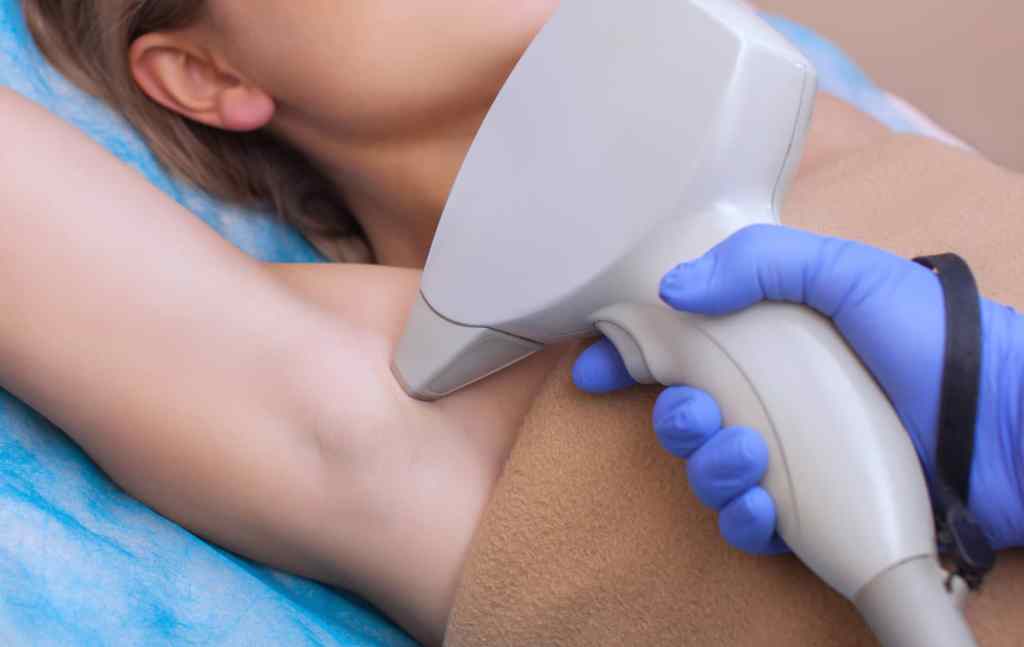
- POPSUGAR Australia
- Beauty
- What to Know About Getting Laser Hair Removal Before You Commit
What to Know About Getting Laser Hair Removal Before You Commit

The idea of getting laser hair removal and never having to shave again is appealing for obvious reasons. Gone would be the days of spending extra time in the shower removing every inch of body hair, dealing with itchy razor bumps, or remembering to shave your bikini line ahead of an upcoming beach trip. Laser hair removal saves you time, money, and effort in the long run, but it is undoubtedly an investment.
Like with any big commitment, before signing yourself up for laser hair removal, you should do your research so you have a general idea of what to expect. There’s the cost to consider, certain rules you should follow pre and post-treatment for the best results, and protocol for the appointment itself. When you decide to get it is also an extremely important factor to consider when starting laser hair removal (more on that below).
If you’re considering starting up laser hair removal for the first time, we’re answering the most common questions about the treatment with the help of two laser hair removal experts, ahead.
How Does Laser Hair Removal Work?
“Laser hair removal works by emitting a monochromatic beam of light that bypasses the epidermis and disables the reproductive cycle of the hair within the follicle,” says Christian Karavolas, laser hair removal expert and founder of Romeo & Juliette Laser Hair Removal. The laser does this by picking up the pigment in the hair and targeting that area. This is what makes lasers effective at providing long-term results.
The treatment areas available differ by spa, but you can pretty much get laser hair removal anywhere you have hair and typically shave. This includes legs, underarms, arms, bikini line, back, face, lower stomach, and even full Brazilian.
Who Is the Best Candidate For Laser Hair Removal?
Gone are the days when laser hair removal was only safe for people with lighter skin tones. “In this day and age, lasers are so advanced that people of all skin colors and hair types are candidates,” says Karavolas. While it used to be an issue because the lasers would target the pigment in the skin as well as the pigment in the hair, new advancements in technology have fixed that.
“Alexandrite Lasers have a short wavelength that are more potent on the epidermis and therefore are more suited for lighter skin and lighter hair,” he says. “ND Yag lasers are best suited for dark skin and coarse hair, as they bypass the epidermis, therefore giving a safe treatment without damaging the skin.” Those with darker skin should just check with the location they plan on visited to ensure they have the proper equipment.
Does Laser Hair Removal Hurt?
Pain is relative, and just how much laser hair removal hurts depends greatly on the individual getting the treatment. Another big factor to consider, however, is where you’re getting your hair removed.
Generally speaking, the areas where the skin is thinner (like your underarms) as well as anywhere where there are a lot of nerve endings (i.e. near your genitals) tend to experience more pain than thicker-skinned areas like, say, your forearm. Most people describe the sensation like a more intense snapping of a rubber band. Luckily, there are a lot of new lasers available these days (like the Zimmer Cryo) that feature a built-in cooling technology that emits super-cold air on your skin while applying the laser to minimise the pain.
When Is the Best Time to Start Hair Removal Treatments?
Here’s the tricky part. Even though hair removal is top of mind in the spring as you book your summer vacations, that’s not the best time to get it. “The best time to start laser hair removal is fall to winter,” says Karavolas. “If you expose your skin to the sun without sunscreen or get very tan, we recommend you wait for the cooler months.”
That doesn’t mean it’s impossible to get it in the summer, but you will need to be more careful to ensure the skin doesn’t get any colour by avoiding the sun and wearing a high SPF. You also can’t have any self-tanner products on at the time of your appointment which are commonly worn in the summer.
What Treatments and Products Should You Avoid While Getting a Laser Treatment?
We already covered that tanning products should be avoided during a laser treatment, but that’s not all. “Any topical retinoids or harsh antibiotics that may cause photo-sensitivity should be avoided,” says Karavolas. This is important to note if you plan on getting an area on your face treated and use skin-care products with retinol in them.
How Much Does Laser Hair Removal Cost?
This is a hard question to answer because the cost of a laser hair removal treatment is dependent on the place you go. “Laser costs as little as $75 per session for the chin or upper lip to as much as between $500 to $700 per session for full legs,” says Karavolas. “There are payment plans as well as packages that are more economical.” As we said, it’s an investment but well worth it in the end.
How Naked Do You Get For a Treatment?
This depends on the area you’re getting treated. For an underarm session, you can leave your shirt on as long as the sleeves can be rolled up. “By rolling the sleeve up right towards their shoulder, the underarm area is exposed, thereby allowing the technician to treat the area,” says Karavolas. “Normally, one keeps their bra on.”
For your bikini line, you have options. “Keeping the underwear on is fine, as the bikini line covers a few inches outside and a few inches inside. One can also wear disposable underwear that could make the treatment much easier.” If you leave your underwear on, the technician may ask you to pull your clothing to the side to ensure it doesn’t get in the way.
Can You Do Laser Hair Removal At Home?
First, it’s worth noting that the strength of the laser in a dermatologist’s office is always going to be much stronger, and therefore more effective, than any at-home laser hair removal device. That said, if you’re a good candidate and have the right tools, you can safely perform the treatment at home – so long as you’re smart about it.
“At-home laser hair devices are pretty safe and are great alternative to professional laser hair removal,” dermatologist Marie Hayag, MD, previously told POPSUGAR. “Most devices don’t actually use ‘laser’ but intense pulsed light, which is absorbed by pigment in the hair follicles. “The repeated heating of the hair follicles destroy them and thus decreases hair growth.”
Even though these devices are generally safe to use at home, you should still be aware that they’re designed to reduce hair growth – not permanently remove it. “The at-home devices use lower energy settings than the in-office treatments so it takes longer time to treat the area and more treatments are needed,” Hayag says. “However, it is a great maintenance treatment for in-between professional laser hair removal and is a wonderful option for home use.”
Are You Able to Shave or Use Other Forms of Hair Removal Between Sessions?
This is a biggie. “You can shave in between sessions but cannot wax or tweeze,” says Karavolas. Laser hair removal targets the hair follicle, meaning tweezing or waxing which pulls the hair out by the base, is a no-go.
Unlike waxing, you are allowed to shave between sessions without worrying about tampering with the results. When it’s time for your next follow-up appointment, just make sure the hair is still visible.
About How Many Sessions Does It Take to Start Seeing Results?
“Depending on the area treated, it can take two to three sessions to start seeing results,” says Karavolas. But keep in mind that everyone is different and that timing can vary. For permanent hair reduction, it usually takes six to eight sessions in total – or more depending on how thick your hair – spaced about six weeks apart. This is because you have to wait for the hair to come back during the next growth cycle each time. Your technician will be able to give you an idea on how many treatments you’ll need and how frequently you should return.
How Long Do Laser Hair Removal Results Last?
Although it’s often touted as a permanent treatment, laser hair removal is really only intended to reduce the hair growth, which slows with every treatment. You can expect much less hair growth after six or more sessions, but just how long the results last varies from person to person. The key is consistency. If you stop treatment before finishing the recommended rounds, you might experience sprouting (even if it is less than normal) after a few months.




